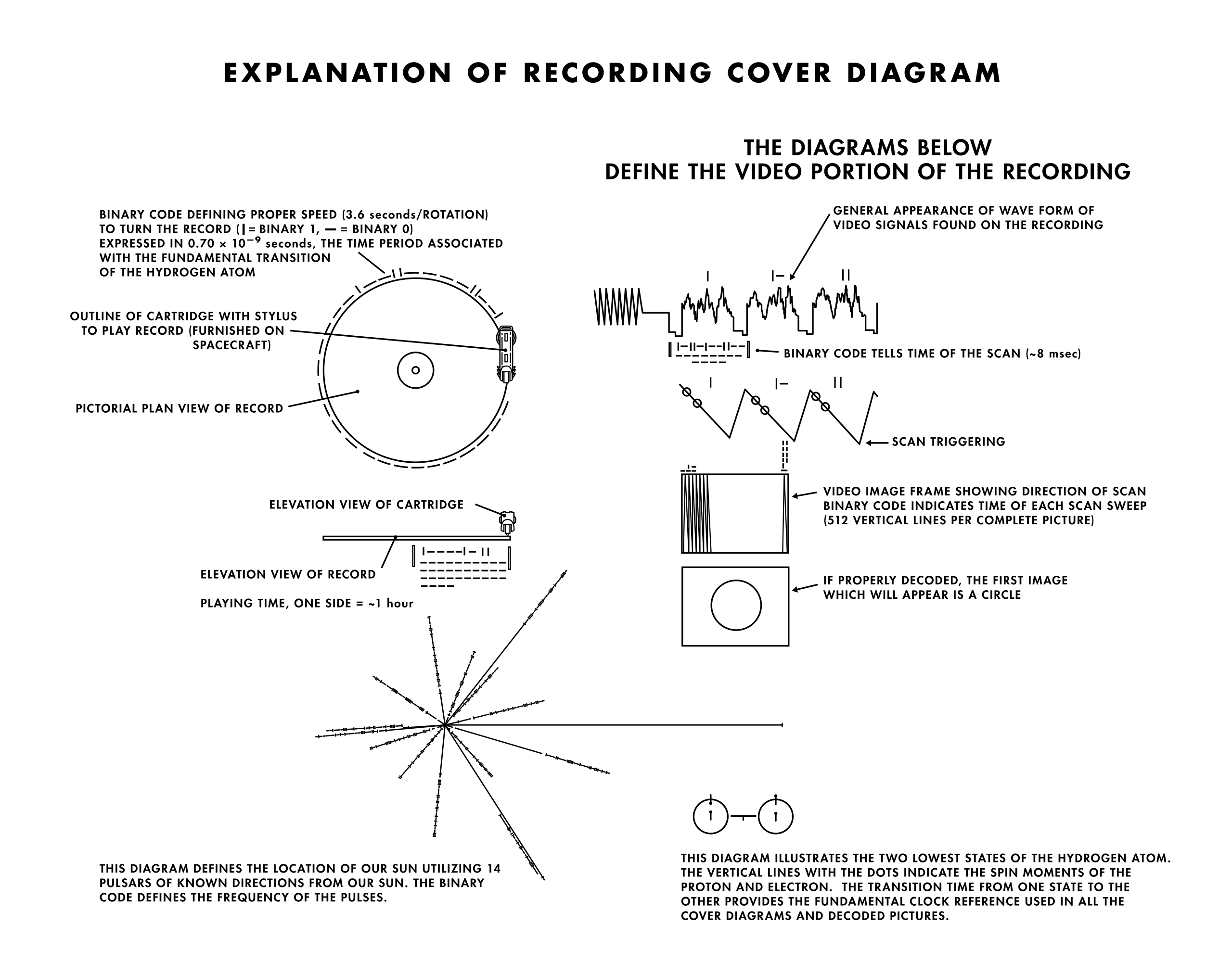Assignment 10
Signs & Symbols — Voyager Record
The Voyager Golden Records are two phonograph records that were included aboard both Voyager spacecrafts launched in 1977. The records contain sounds and images selected to portray the diversity of life and culture on Earth, and are intended for any intelligent extraterrestrial life form who may find them. The Voyager Records are now 46 years old, still sailing across the universe awaiting to come in contact with another lifeform in outer space.
Understanding the this project is meant to be a time capsule explaining the human condition, what would the record look like today? Create your own Voyager Record by selecting 50 images and 12 audio tracks, and designing your own Pioneer Plaque and Playback Diagram. Design this as a 3xLP Box Set package. Design a slipcase, three record sleeves and booklet using your selected images and track listing.
DELIVERABLES
—Pioneer Plaque Diagram
—Playback Diagram
—Record Packaging
• 12¾x12¾" Slipcase Front Cover
• 12¾x12¾" Slipcase Back Cover
• 12½x12½" Record Sleeves ×3
• 12½x12½" 16pg Booklet including 50 images
WEEK I
Select 12 audio tracks, 25 of your 50 images, and design the first 8 pages of your 16 page booklet. Redesign your Pioneer Plaque featuring a pictorial message in case it is intercepted by intelligent extraterrestrial life. Include several symbols that are designed to provide information about your time capsule. Print your 8 pages at 8x8" single sided and cut so size, and your Plaque diagram. Hang your work for presentation.

The contents of the record were selected for NASA by a committee chaired by Carl Sagan of Cornell University. The selection of content for the record took almost a year. Sagan and his associates assembled 115 images and a variety of natural sounds, such as those made by surf, wind, thunder and animals (including the songs of birds and whales). To this they added musical selections from different cultures and eras, spoken greetings in 55 ancient and modern languages including a spoken greeting in English by U.N. Secretary-General Kurt Waldheim, other human sounds, like footsteps and laughter (Sagan's), and a printed message from U.S. president Jimmy Carter. The record also includes the inspirational message Per aspera ad astra in Morse code.
The collection of images includes many photographs and diagrams both in black and white, and color. The first images are of scientific interest, showing mathematical and physical quantities, the Solar System and its planets, DNA, and human anatomy and reproduction. Care was taken to include not only pictures of humanity, but also some of animals, insects, plants and landscapes. Images of humanity depict a broad range of cultures. These images show food, architecture, and humans in portraits as well as going about their day-to-day lives. Many pictures are annotated with one or more indications of scales of time, size, or mass. Some images contain indications of chemical composition. All measures used on the pictures are defined in the first few images using physical references that are likely to be consistent anywhere in the universe.
The musical selection is also varied, featuring works by composers such as J.S. Bach (interpreted by Glenn Gould), Mozart, Beethoven (played by the Budapest String Quartet), and Stravinsky. The disc also includes music by Guan Pinghu, Blind Willie Johnson, Chuck Berry, Kesarbai Kerkar, Valya Balkanska, and electronic composer Laurie Spiegel, as well as Azerbaijani folk music (Mugham) by oboe player Kamil Jalilov. The inclusion of Berry's "Johnny B. Goode" was controversial, with some claiming that rock music was "adolescent", to which Sagan replied, "There are a lot of adolescents on the planet." The selection of music for the record was completed by a team composed of Carl Sagan as project director, Linda Salzman Sagan, Frank Drake, Alan Lomax, Ann Druyan as creative director, artist Jon Lomberg, Timothy Ferris as producer, and Jimmy Iovine as sound engineer.
The Golden Record also carries an hour-long recording of the brainwaves of Ann Druyan. During the recording of the brainwaves, Druyan thought of many topics, including Earth's history, civilizations and the problems they face, and what it was like to fall in love. Link.

Pioneer Plaque

Playback Diagram